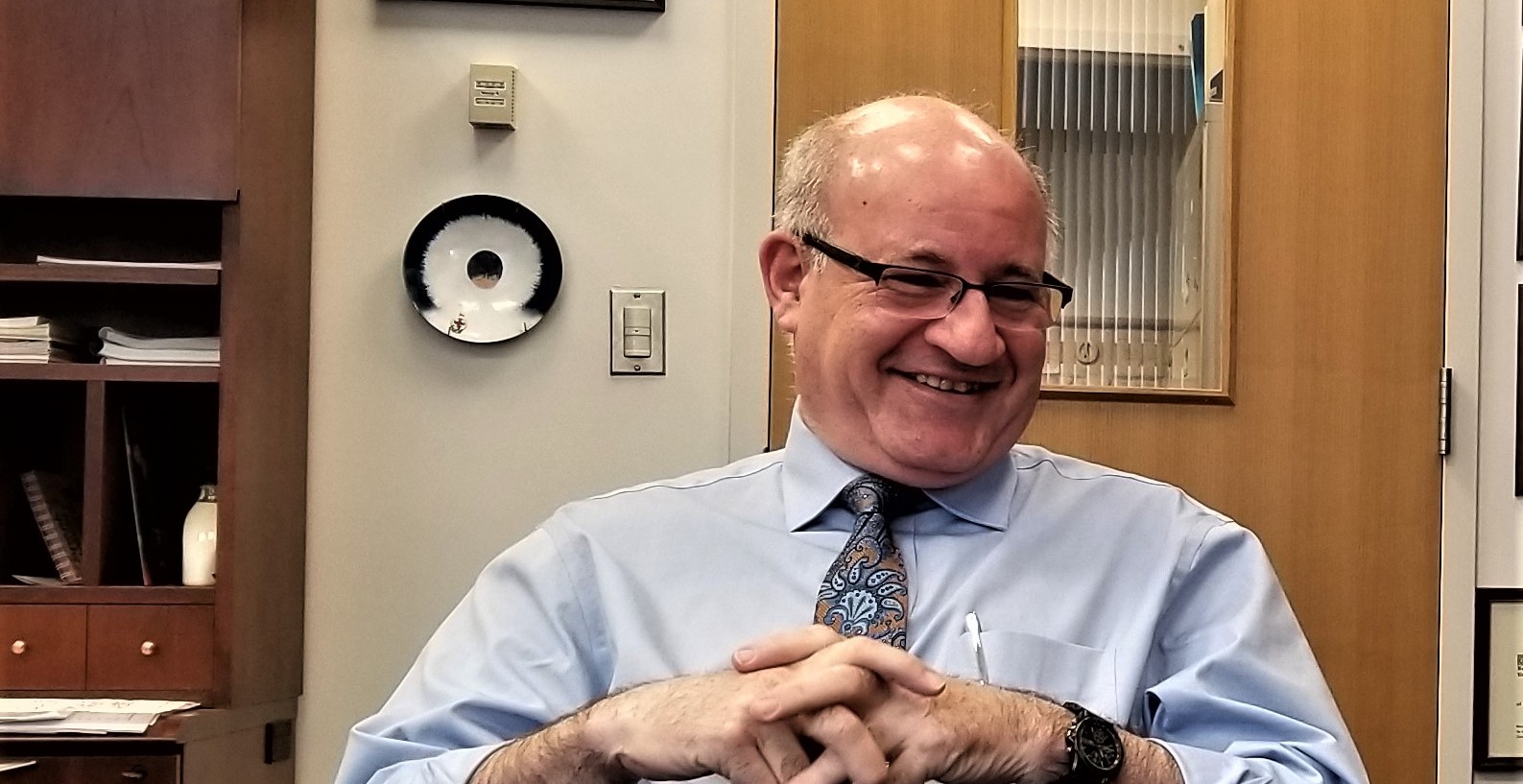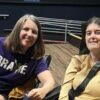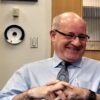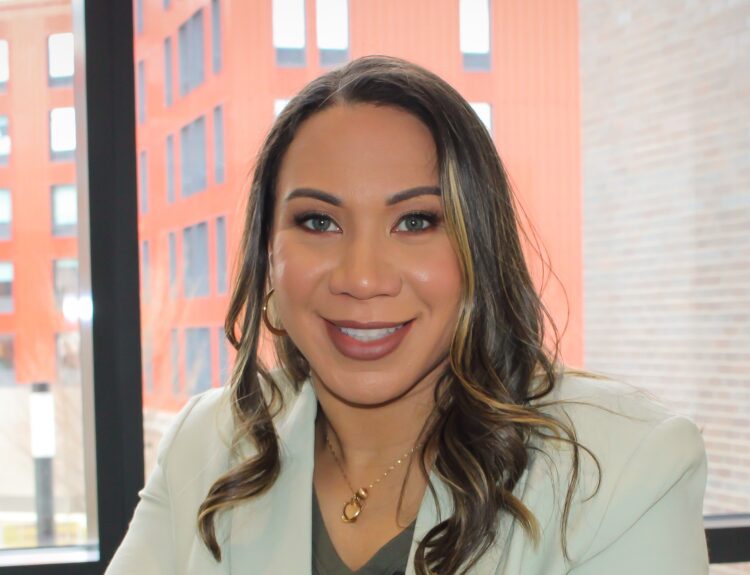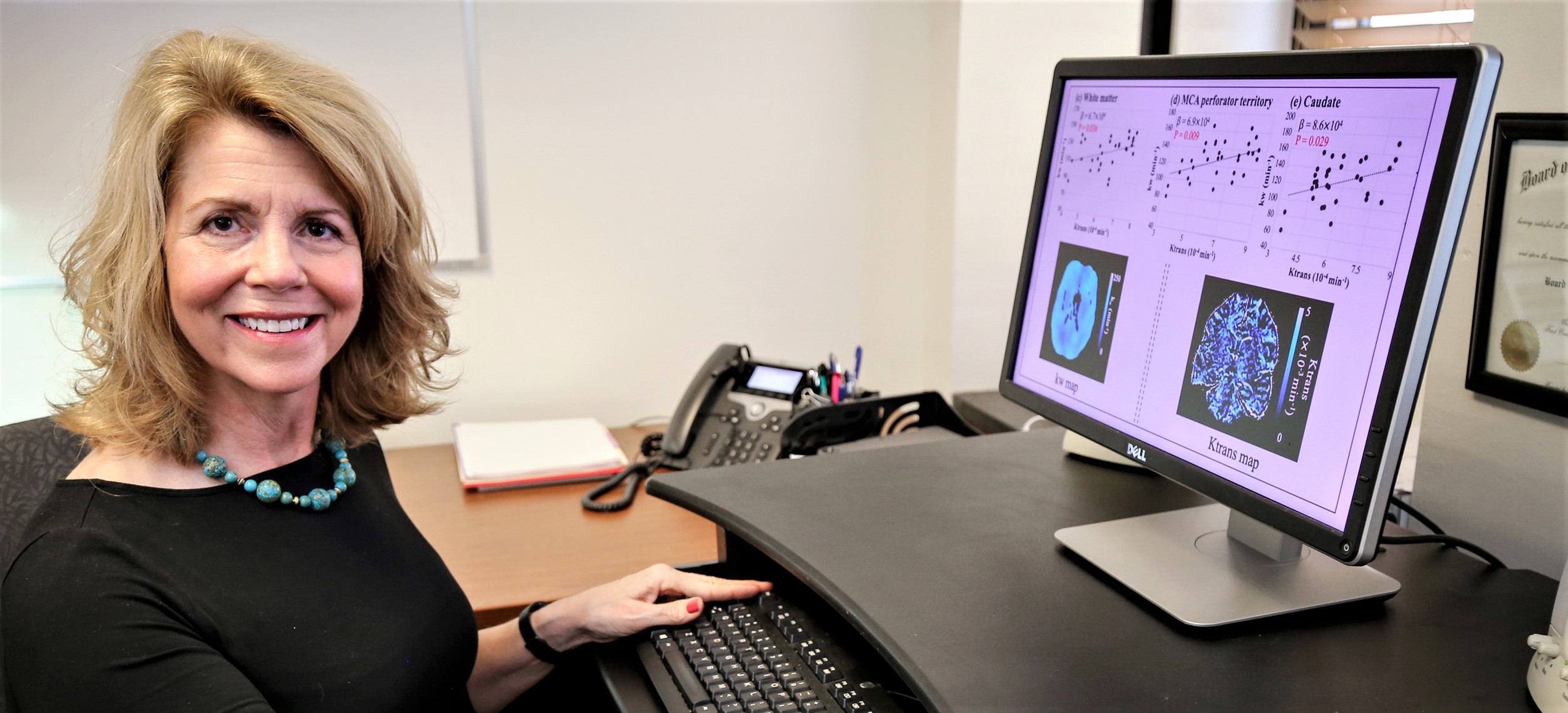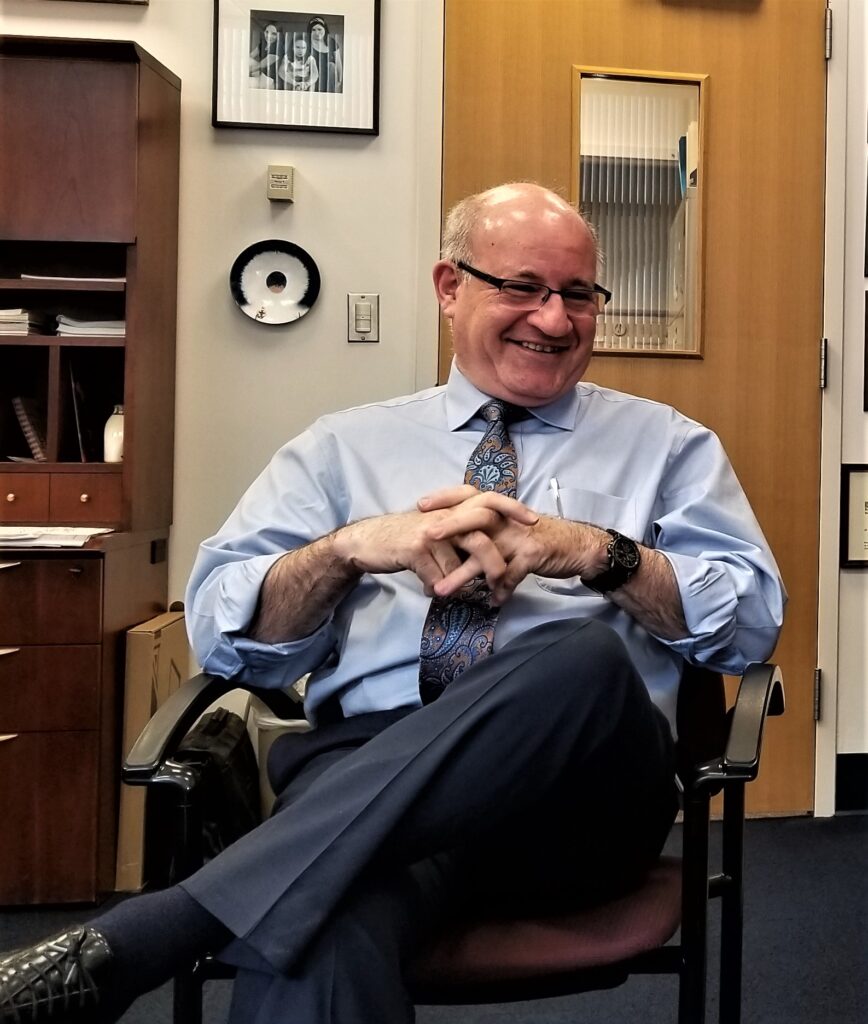
You have been a leading member of the Rhode Island medical community for decades, and we’ll get to that in a moment. But let’s start with your background. You are a native of Belgium. Tell us about your upbringing there.
Born and raised in Antwerp, Belgium. My mother was French (from the Alsace). She had been a social worker, and would have loved to become a doctor; but times were different (early 1950s, coming out of World War II). She did rise in the ranks and ultimately ran an entire division; but then, she followed my father to Belgium and became a stay-at-home mom.
I was a pretty good student, at least through the equivalent of junior high. I’ve always loved to draw, and I was fairly creative; I also loved to tinker with machines, taking tv sets apart, things like that. I was very active in the boy scouts, which turned out to be a great outlet for all my interests and hobbies.
As a result, I had no idea what I wanted to study after high school – too many interesting things. I toyed with the idea of architecture (for the creative drawing, and inspired by my passion for building stuff in Lego?) – but I suspect my mom suggested medical school. In Belgium, as in most European countries, you go to medical school right out of high school: there are no ‘general knowledge’ undergrad studies. At 17, I decided to study medicine for all the wrong reasons: I was convinced that, with a medical degree, I could do pretty much anything I wanted. (Spoiler: of course not. With a medical degree, you become a doctor. That’s it.) In France, getting into medical school was difficult – you had to score very high on your baccalaureate exam (“le bac”). In the Netherlands, it was a lottery. In Belgium, there were no such restrictions – but the first two years of medical school were engineered to fail at least 50% of the students – their way to limit the number of medical graduates. I did pretty bad the first year (in fact, I had to repeat it), and did ‘just ok’ after that.
When did you decide you wanted to be a surgeon?
I found medical school interesting, but couldn’t decide on a specialty – until I did my first rotation in surgery. (Second misconception on my part: I had always imagined surgery to be a highly intellectual, and theoretical discipline, and that first time in an operating room was an eye-opener: it was completely manual, hands-on, and so much like the tinkering I had been doing throughout my childhood.)
Where did you study? And complete your residencies?
In Belgium, people tend to travel much less for college or medical school. I was living in Antwerp; Antwerp had a medical school – that was a no-brainer. During the summer between the undergrad years (called “Candidacy in Medicine”) and what was called the doctorate years (the equivalent to medical school proper in this country), I crisscrossed the United States for two months with three other classmates – including the person I would later marry. She and I formed the plan to do a residency in the U.S., before going back home and practicing in Belgium. That turned out to be misconception #3 – it proved much harder to find a training position than we thought. There was a much-feared qualifying examination (we passed), very few residency spots for foreign graduates, and most of all, a grueling “pyramidal” program: you started out with 12 interns, and every year, a few were eliminated, until you ended with only 2 senior residents and 2 chief residents. (These pyramidal programs have long since been outlawed.) I survived three eliminations, only to find out that the entire training program was shut down – but was somehow rescued by another training program in my 4th year (all of it in New York City). By then, I had become increasingly interested in pediatric surgery, but that was an even less attainable goal, as it was one of the more competitive surgical subspecialties. (Interesting fact about surgeons, who are generally not afraid of anything: most of them are afraid of treating children – or at least, that’s what one my very senior surgical attendings told me later: I don’t remember it at all, but he recounted a time when I took care of a small child who had been injured, and I was apparently calmy giving out orders and making urgent clinical decisions while everyone around me seemed to panic. I don’t know how much truth there is behind this Mr. Miyagi moment, but he later said he knew at that moment that pediatric surgery was the right choice for me.)
As mentioned, Pediatric Surgery is a very competitive field, and acceptance into a training fellowship usually requires additional years in research – which I didn’t have. What I did have, however, was a mastery of French: Even though it is accredited by the U.S. ACGME (Accreditation Council for Graduate Medical Education), the training program at the University of Montreal and the Ste-Justine Hospital is entirely French-speaking, making it very difficult for most Americans and English-speaking Canadians to apply. Oh well – their loss.
What brought you to Rhode Island?
For a number of years, the Belgian (medical) authorities, U.S. Immigration and us were totally out of sync. When we left Europe to get training in the U.S., we were told in no uncertain terms we would not be allowed to come back and practice in Belgium (no reciprocity laws) – even though that was our goal. When, after five years in New York and two years in Montreal, we finally decided we did want to stay in North America, we were told we first had to go back to Belgium. There followed a few dicey months – by then, we had two young children and no jobs – but we eventually landed interesting research fellowships. And when we made a move to go back to the States, I was told by my chiefs that, actually, there was a job available (at the University of Leuven) and that we should stay in Belgium instead. By then, we had already had a chance to discover Rhode Island, and there was a great opportunity at Brown and a brand-new children’s hospital. (Having lived in New York, I knew the difference between LONG Island and RHODE Island; but I didn’t know much else about it, other than the fact that it was one of those tiny states whose name could never be printed in full on a map. Also, I still thought it was an island.) In a way, Rhode Island is very similar to our native Belgium, in addition to the small size: a lot of coastline and sailing, a very temperate climate, and highly cosmopolitan.
For many years, you have been Pediatric Surgeon-in-Chief and Division Chief of Pediatric Surgery at Hasbro Children’s Hospital, and also a professor at the Warren Alpert Medical School of Brown University. Give us an overview of those responsibilities.
For most of my career at Brown and at Hasbro Children’s Hospital, I had the good fortune of having great mentors and leaders who took care of any worldly concerns, so that I could concentrate on being a better surgeon. I stepped into that leadership position, seven years ago, as a way to give back, of course, and as a result of age and experience. The way I see it, my most important role is to give a voice to all pediatric surgical subspecialties within Hasbro, and to further the mission of the hospital as a whole. Medicine, and surgery in particular, work at the individual level – you help one person at a time. I feel that, in my current position, I can help a lot of surgeons each help one person at a time. I also enjoy the challenge of putting Hasbro on the map. We may be a small hospital in the smallest state, but our reputation is much bigger than our footprint, and we need to continue to build on it.
As for being a professor: there are many aspects to a Brown appointment. Some of us do in fact teach in a classroom, but many more teach on the wards, in the operating room, in the clinics; we teach medical students, residents, fellows – and each other. Academic medicine is very stimulating and it keeps you honest: you have to be on your toes and follow the scientific literature, because medicine evolves constantly. It is a worn-out cliché, but we are life-long learners. Continuing medical education, or CME, as it is called, also keeps you young: once you stop being inquisitive and start believing you know everything, well, that’s the end. (An anecdote just popped into my head, and it involves Dr. Hardy Hendren (whose beautifully written biography, “The Work of Human Hands,” I would highly recommend, even if it wasn’t written by you). Dr. Hendren was the chief of pediatric surgery at Boston Children’s Hospital and a veritable pioneer in pediatric surgery and pediatric urology (both specialties rightfully consider him as one of their founding fathers). He was a legend, and if ever there was a master surgeon who could have claimed to know everything about the field, it was him. I happened to be sitting next to him at a conference while one of our residents presented a study on the non-operative treatment of appendicitis – considered by many at the time to be heresy: everybody knows that the only treatment for an inflamed appendix is surgical removal. Totally unexpectedly, he turned to me at the end of the presentation and said “Well, I guess I did learn something new today,” or something to that effect.)
You are a general pediatric surgeon but you also have a number of specialties. Tell us about those.
The often-misquoted Jack-of-all-trades quip (that he’s the master of none – but that it is better than a master of one) probably applies to pediatric surgery. Rather than focusing on a part of the body or an organ system, pediatric surgeons treat everything, and everyone under 21 – from trauma to appendicitis, from congenital conditions in the newborn to gallbladder disease in young adults, cancer, thoracic pathology, etc. Many of us also develop special predilections for a subset of pediatric surgery, and in a well-balanced, mature division (like the one at Hasbro Children’s Hospital), each faculty member has a few areas of special expertise. My stint in a research environment in Leuven, Belgium, just before I came to Rhode Island, exposed me to the then-nascent field of laparoscopy, or minimally invasive surgery – as well as its application to fetal surgery (operating on the fetus in utero). I developed both fields upon my arrival in Providence. It coincided with a period when Rhode Island Hospital was at the forefront of laparoscopic surgery, under Joe Amaral, and it was a fertile ground to start a similar program at Hasbro. For many years, we were one of the most progressive centers for pediatric minimally invasive surgery; since then, it has become commonplace, but our current pediatric surgeons continue to push the envelope.
With colleagues from Women & Infants (most notably Stephen Carr) and the support from both hospital leaderships, we developed one of the very first centers for fetal therapy in the country; we have been offering in utero surgery since 2000, and have treated patients from all over the region, and the country (from as far as New Jersey, North Dakota, Georgia and Louisiana). Establishing Hasbro, Rhode Island Hospital, Women & Infants Hospital and Brown as one of the leaders in the field has been my proudest endeavor over the last three decades.
What are some of the most important advances you have seen in pediatric surgery over the years?
Fetal surgery is without a doubt one of the most spectacular recent advances in the field of surgery, but not the only one. Critical care revolutionized medicine, with the opening of the first ICUs in the 1950s. Pediatric critical care is even younger, and ECMO, or extracorporeal membrane oxygenation, is one example of how technology and medicine came together to produce incredibly complex life-saving techniques for newborns and children (as well as adults, as we saw during the worst months of the COVID pandemic). The ECMO program at Hasbro. is one of the shining examples of this new field.
The majority of abdominal operations and many thoracic procedures are now done using minimally invasive techniques (also called keyhole surgery) – one of the biggest changes in routine surgical interventions. That, and the development of protocols called Enhanced Recovery After Surgery, or ERAS, means that patients spend much less time in the hospital after an operation.
Some operations have become almost obsolete, and that’s a good thing. One of the most difficult situations in newborn surgery is short bowel syndrome – when an infant loses, or has lost the majority of their small intestine, and has to rely on total parenteral nutrition, or TPN (being fed entirely intravenously) for survival and growth. Not that long ago, the typical complication of long-term TPN was liver damage, and many of these patients required a liver transplantation. That is almost unheard of these days – and our treatment of these children has become so sophisticated that many will gradually be able to eat normally. One of the reasons for these successes is the increased reliance on treatment teams – collaborations between doctors and other healthcare professionals from multiple specialties who come together to offer the best possible treatment. In the case of rare disorders, the creation of networks, registries and data-sharing programs has allowed us to interact with specialists all over the world. One of the most spectacular successes is Wilms tumor, a cancer of the kidney that was almost 100% fatal five decades ago; even the largest children’s hospitals didn’t see more than a handful of these cases per year, and it was therefore difficult to conduct trials. The creation of the National Wilms Tumor Study Group and pooling of data led to a better understanding of the disease and a much more effective way to treat it: today, survival is greater than 90%.
This strength in numbers is even more obvious in the field of fetal medicine. Brown is a proud founding member of the North American Fetal Therapy Network (NAFTNet): from a handful or original centers 15 years ago, it has now grown to more than 45 institutions, and has generated tens of multicenter trials that have benefited innumerable children and their parents.
What are some of the remaining frontiers?
Some conditions remain frustratingly difficult to cure, or even treat. Childhood cancer is an obvious target for much of the research, and we are making strides (see the example with Wilms tumor). We are also becoming more sophisticated: where before, survival was the most important goal, we now focus also on quality of life, reducing the toxicity of some of the treatments, and early identification, treatment, or even prevention of secondary cancers that may be caused by certain medical therapies. Other conditions that are still eluding a cure are inflammatory bowel disorders (Crohn’s disease and ulcerative colitis), cystic fibrosis or sickle cell anemia. As much as it pains me to admit it, most of these will not have a surgical solution, but a more targeted, sophisticated approach, like gene editing, stem cell therapy or enzyme replacement therapy – all forms of treatments that are already being trialed, and – in the case of sickle cell disease – are very much in the news right now.
In the field of neonatology (and neonatal surgery), the problem of prematurity remains one of the most difficult problems we face. Today, the limit of viability outside the womb lies between 22 and 23 weeks gestation (almost half a normal, term pregnancy!) – but these extremely premature infants are at risk for a laundry list of problems, from lung disease to necrotizing enterocolitis to cerebral complications. It is unlikely that we will ever eliminate premature birth – but some exciting research is being done to recreate an artificial uterus of sorts, allowing prematurely born infants to continue their development in a high-tech customized pod as if they were still in the womb.
What advice do you have for young people who are interested in becoming doctors?
There is quite a bit of cynicism in medicine today – ‘it isn’t what it used to be, we’re driven to see more and more patients in a shorter amount of time, the technology is killing us, electronic medical records are the death of clinical medicine, to say nothing about decreasing salaries…’ These refrains are not new, and nostalgia for the “good old days” makes us forget a lot (to quote F.C. Burnand, a 19th century editor of Punch, in response to the critique that the magazine wasn’t as good as it once was: “It never was”). Don’t listen to the naysayers, medicine has never been more exciting than today, and the thought that the doctors of tomorrow will discover, and deliver treatments for diseases we thought incurable is so exciting. Follow your passion, is what I say. (I do have one piece of advice I learned along the way: every profession or specialty has to deal with some annoyances; ask yourself which ones are deal-breakers and which ones you can live with. In other words, in choosing a specialty, think about what you really don’t want to have to deal with.)
In addition to your surgery and medicine, you are also an accomplished author, of the 2022 title “MedSpeak Illuminated: The Art and Practice of Medical Illustration.” As a medical writer myself, I treasure my copy. Tell us about the book. You not only wrote it – you illustrated it, too.
As I said, I have been drawing all my life. I drew a daily comic strip for several Belgian newspapers, back in the day; I had to give it up when I started my residency in surgery – there clearly wasn’t time enough to do both! Instead, I dabbled in medical illustration – drawing for myself, and often for others. Then, about 10 years ago, I was asked to give a one-day workshop on medical illustration for Brown medical students. That took off, and morphed into a full-semester course for undergrad students at Brown and the Rhode Island School of Design. Somewhere along the way, Jay Baruch (an emergency medicine physician at Rhode Island Hospital and brilliant writer), who had been at the origin of the one-day workshop, felt this could become a book, and put me in touch with his publisher. I had played with the idea of a book myself: in the course of building the curriculum, I had delved deeper in the history of medical illustration and the fascinating relationship between art and medicine, not to mention some of the darker aspects of anatomic dissection and illustration. There was so much interesting material, too much to cram into a single course. I couldn’t find anything like that on the market – plenty of art history works, pure drawing instruction manuals and a few books on the history of medical illustration – but nothing that combined all these aspects and wove them all together. The original draft morphed quite a bit after I submitted a proposal to the publisher, and they helped me turn it from a blueprint of the course into a more cohesive narrative, a story that hopefully has a wider audience than just the medical illustration nerds like me. And yes, I use many examples from my own experience (half of the more than 180 figures are mine) – but I have also peppered the book with well-known artwork, including Rembrandts, Michelangelos and Van Goghs, to show how much medical information is hidden in classic paintings.
Speaking of art, you are the talent behind Rhodeside.art. Tell us about that.
Rhodeside Art began as a bad pun (and there is nothing wrong with that, IMO). I had been doodling on my new ipad, creating stylized, bright-colored sceneries of beaches, the leaves in fall and lighthouses, and those gradually evolved into typical scenes from around Rhode Island (the Big Blue Bug, the Narragansett Electric smoke stacks, the now-defunct PawSox…). I called them Rhodeside Attractions, and – given my role at Hasbro Children’s Hospital – thought it would be cute to turn them into notecards, to benefit the hospital. The website is rhodeside.art, and of course the help page on the site is called Rhodeside Assistance; the page where you can order the cards is Rhodeside Stand; and the page with links to write-ups in the Providence Journal, Rhode Island Monthly and several TV pieces about the cards is called Rhodeside Billboards. Like I said, I love me a good pun. (The notecards have not taken over the greeting card market (yet) – Hallmark has nothing to fear; but I have received some very nice feedback in the two years since they came out.
How on earth do you manage all of these pursuits and passions? There are only 24 hours in a day!
I usually quip that “I don’t play golf” – but then, I realized recently that that is your line, too. The reality is that a lot of us like to stay busy – and more to the point, a lot of ideas (whether it is for a book, an illustration, a project) can come to us at any moment, often when our mind is idling, during a commute or on a long plane ride. And all these activities are related: medical illustration is a form of visual communication, something most doctor do every day. It helps break down language and comprehension barriers, it helps us connect more with our patients, makes for more humanistic doctors. It is also beneficial in our academic mission, to teach the next generation of physicians or explain our research to colleagues. And of course, as a pediatric surgeon, I have a very willing audience for my doodles and funny pictures.
What’s on the horizon for Francois Luks?
The Division of Pediatric Surgery (and all surgical specialties at Hasbro) are thriving, and we have collectively grown spectacularly in the last 2-3 decades. Speaking of a legacy is way too pompous – but I do take pride in how our little children’s hospital has gained in reputation on a regional and national level. I want to help the next generation of doctors, and leaders, to make Hasbro Children’s Hospital even bigger – not only to better serve our community, but to make it into a destination hospital for families beyond our region, as we build more and more programs of excellence.
I am clearly closer to the end than the beginning of my surgical career. A first transition has been the leadership roles I have taken on – like I said, helping many doctors help one person at a time. The illustration course (and its spin-off, medical comics) have led to a desire to create a graduate program in medical and scientific illustration in Rhode Island. There are currently only four graduate programs in the U.S., and none of them has the unique proximity of two world-class institutions oh higher learning (Brown and RISD). Fortunately, I have found a number of allies and similarly excited collaborators, both within Rhode Island and on the national stage. Stay tuned…
During his journalism career, Ocean State Stories director Miller has written frequently about Hasbro Children’s Hospital and Dr. Luks. “The Work of Human Hands: Hardy Hendren and Surgical Wonder at Children’s Hospital” was originally published by Random House in 1993. Crossroad Press published an updated edition in 2012.

